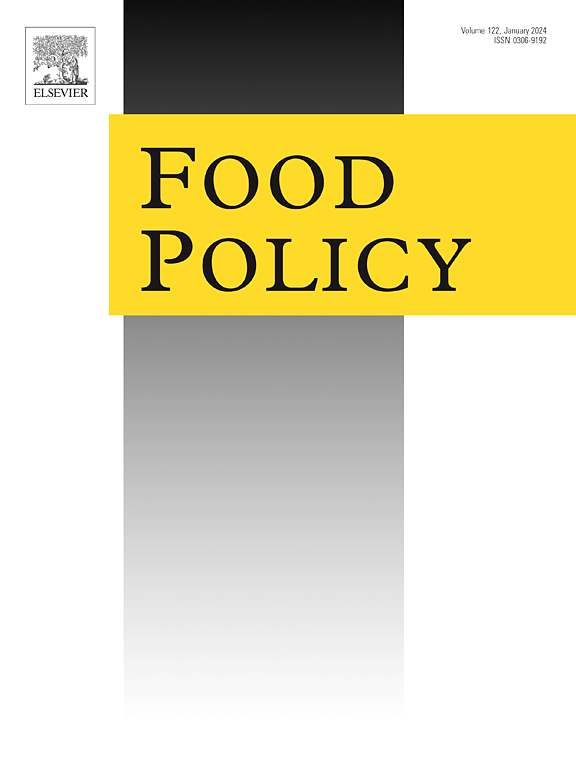Analysis of the Italian regulatory framework on the welfare of aquatic organisms, with a focus on live crustaceans
IF 6.8
1区 经济学
Q1 AGRICULTURAL ECONOMICS & POLICY
引用次数: 0
Abstract
The European Union regulatory framework for the welfare of aquatic organisms (AOW), live seafood (LSW) and live crustaceans intended for human consumption (LCW) is still in its nascent stages. Member States have tackled the subject with different regulatory approach, represented in Italy, by municipal regulations. The present study was designed to provide an overview of the municipal regulations pertaining to AOW, LSW, and LCW issued in Italy to date. A search was conducted on Google from December 2023 to March 2024 using specific keywords. The analysis of the regulations entailed the scrutiny of provisions concerning AOW and LSW during transport, maintenance, display and, additionally, LCW during stunning and slaughter. A total of 771 municipal regulations on animal welfare issued from 2001 to 2023 were collected. A total of 542 provisions concerning AOW were identified, while 234 and 181 provisions also addressed LSW and LCW, respectively. As regards LCW, specific regulations included the prohibition of the claws banding (85.1%), slaughter prior to sale (59.1%), and boiling of live crustaceans (33.1%). Conversely, the obligation to slaughter before sale (12.1%), after stunning (10.5%) and out of sight of the consumer (5%) were reported. The divergent and generally not scientifically-based nature of the regulations suggests limitations of the Italian approach in AOW, LSW and LCW management. In anticipation of the risk assessment-based revision of EU legislation on AOW, the results provide an updated basis for the drafting of national technical guidelines, including species-specific control checklists, for the monitoring of LCW along the entire supply chain.
分析意大利对水生生物福利的监管框架,重点是活甲壳类动物
欧盟关于水生生物(AOW)、活海鲜(LSW)和供人类食用的活甲壳类动物(LCW)福利的监管框架仍处于起步阶段。会员国以不同的管理办法处理这一问题,以意大利为代表的是市政条例。本研究旨在概述意大利迄今为止颁布的有关AOW、LSW和LCW的市政法规。从2023年12月到2024年3月,在谷歌上使用特定关键词进行了搜索。对条例的分析需要审查有关运输、维修、展示期间的AOW和LSW的规定,此外,还有昏迷和屠宰期间的LCW。共收集了2001年至2023年颁布的771项市级动物福利法规。共确定了542条与AOW有关的条款,而234条和181条也分别涉及LSW和LCW。在LCW方面,具体规定包括禁止夹爪(85.1%)、禁止出售前屠宰(59.1%)和禁止煮煮活甲壳类动物(33.1%)。相反,有义务在销售前屠宰(12.1%),在昏迷后屠宰(10.5%)和在消费者看不到的地方屠宰(5%)。这些法规的分歧性和通常不具有科学依据的性质表明,意大利方法在AOW、LSW和LCW管理方面存在局限性。预计欧盟将对AOW立法进行基于风险评估的修订,研究结果为起草国家技术指南提供了更新的基础,包括特定物种的控制清单,以监测整个供应链上的LCW。
本文章由计算机程序翻译,如有差异,请以英文原文为准。
求助全文
约1分钟内获得全文
求助全文
来源期刊

Food Policy
管理科学-农业经济与政策
CiteScore
11.40
自引率
4.60%
发文量
128
审稿时长
62 days
期刊介绍:
Food Policy is a multidisciplinary journal publishing original research and novel evidence on issues in the formulation, implementation, and evaluation of policies for the food sector in developing, transition, and advanced economies.
Our main focus is on the economic and social aspect of food policy, and we prioritize empirical studies informing international food policy debates. Provided that articles make a clear and explicit contribution to food policy debates of international interest, we consider papers from any of the social sciences. Papers from other disciplines (e.g., law) will be considered only if they provide a key policy contribution, and are written in a style which is accessible to a social science readership.
 求助内容:
求助内容: 应助结果提醒方式:
应助结果提醒方式:


